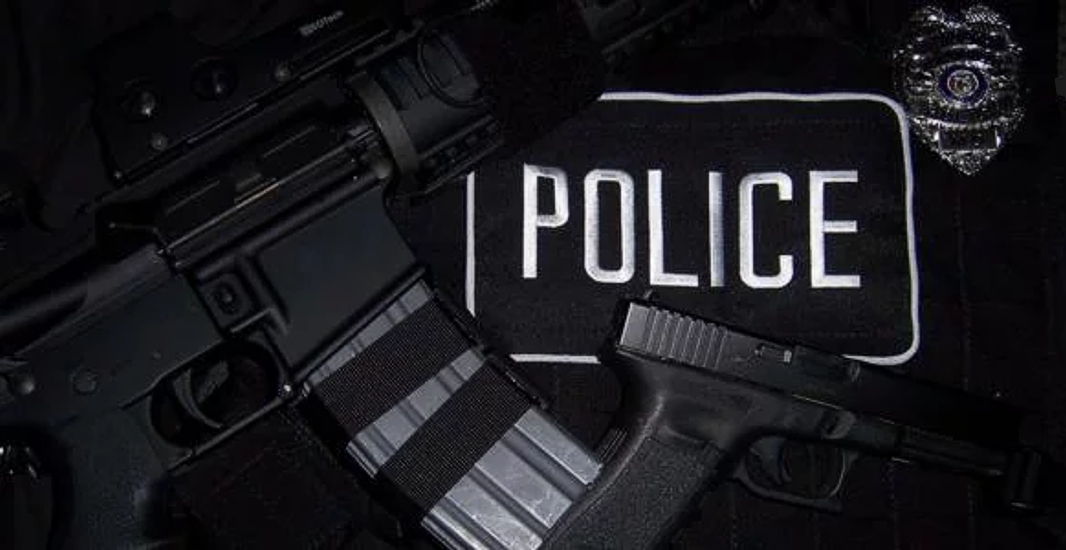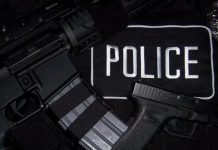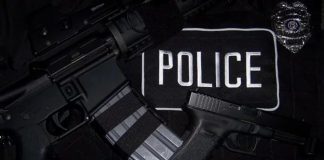There is little truly new on the subject of officer survival tactics. It is the simple, unglamorous basics that will keep an officer alive.
Sadly, the same mistakes that have occurred for over a century continue to get officers killed. The following are ten deadly on the job errors that are common errors that can be recognized, anticipated, and avoided.
ONE
The most common on the job error is failure to maintain proficiency of the weapon, vehicle or equipment. The stories of the empty gun, the sidearm so neglected it failed to fire, or the ammo green with verdigris happen entirely too often. Routine scheduled fire practice with others on the same shift will help avoid the problems outlined above and encourage team building.
For most officers the routine traffic stop is an ever-present threat. Each situation is different, the weather and visibility conditions, the topography of the roadway, the volume and speed of traffic, the number of suspects in the vehicle, the situation that leads up to the stop. The officer’s common sense is always his best friend.
Traffic stops can turn fatal at any time. It is possible to vary the approach to the suspect’s vehicle in four different ways. Most officers use the direct approach that leads from their car to the suspects. This is not considered safe on busy interstates and some officers are now positioning in front of the driver’s door. This allows the officer a much better reactionary time against oncoming traffic dangers, but does not offer the tactical advantage against the driver.
At night, it has been recommended that the encircling approach be used. The officer circles behind his own vehicle and approaches the suspect’s by the passenger’s side. He stops at the rear window. This enables the officer to keep the driver off guard and looking in the wrong direction when the officer appears unexpectedly on his right. This allows a safe view of the interior of the vehicle, more reaction time, and a better view of the driver’s right hand. It also puts the driver off balance by forcing him to turn in his seat and reach over the seat toward the rear passenger’s seat.
Of course, there is the option of staying in the vehicle and over the public address system ordering the driver to step out of the car with his hands in plain sight and come toward police car. This is especially useful if there is more than one person in the suspect’s vehicle.
According to Neal Fortin in his article entitled, Ten Common Errors Leading to Officer Deaths “When you’re first on the scene, distance buys time, and time buys survival.”
Unfortunately, this is only a small part of a much larger, less blatant problem. FBI statistical summaries reveal that of victim officers who managed to shoot back, only 15 percent managed to kill or even hit their assailants. Continual firing practice is essential to allow familiarity in the event of an actual shootout. No assignment can be considered safe.
TWO
The second common on the job error is improper search and use of handcuffs. A combative individual must be subdued, handcuffed, searched, and then transported. If that order were followed consistently there would be fewer deaths. It is important to maintain a position of advantage.
On approach, they officer should keep his gun side away from the suspect. The officer should search the likely areas first (the waistband is the most common locations of weapons for males), but establish a pattern.
A methodical search routine, ingrained as habit, helps prevent missing anything. It’s also necessary to check unusual locations, under hats, inside boots and underwear.
Talk or intimidation may be used to throw off an officer. For example, to prevent a search of the crotch a suspect may shout, “What are you, queer?” Or they may try to lure the officer into a false sense of security by acting submissively. In the event that one weapon is found, keep searching because second weapons are on the increase among criminals, too.
It is extremely important, when a suspect is handed over to another officer, that officer performs a new search because poor searches are the norm.
THREE
The third common on the job error concerns the maintenance necessary for personal health; staying warm, staying dry and staying fed. Excessive workloads, time constraints, off-duty responsibilities and other factors can pressure an officer to ignore how he/she feels and functions. Stopping to take breaks can improve an officer’s productivity and performance.
Being a professional means an officer must know his/her limitations and adjust for them. These are actions of a professional and could very well save an officer’s life.
FOUR
The fourth common on the job error is about missing danger signs. FBI summaries report that of officers slain, almost 60 percent did not even have their guns unholstered.
In even the most common circumstances, an officer must remember to keep his/her senses operating. The officer should notice things out of place, i.e., wearing a coat in hot weather; touching themselves where a gun might be; a shirttail untucked on only one side. Be aware most of all of those who are alert and watching him/her.
There is a need to keep your back to the wall. Look first before entering an area. Take corners wide or use the quick-peek technique. Be alert for hiding places. Beware of distractions. The use of seductively clad females is a common trick.
Trust your senses including your sixth sense, a gut feeling or the subconscious processing of clues, listen to your inter-self. Be alert. The power of observation is one of the most valuable tools to staying alive.
FIVE
The fifth common on the job error is taking a bad position the improper use of cover and concealment. Of officers involved in shootings, almost two thirds did not use cover. An officer should think about cover and concealment ahead of time.
He/she should always pay attention to the basics: (1) Don’t bunch up in doorways or hallways; (2) Don’t turn your back on a suspect; (3) Peer to the side, rather than over cover, it offers less exposure; (4) Most people are right handed, so approach suspects from the left; and (5) If they are armed, it will take them longer to target you.
An officer should observe a suspect first, watching for weapons. It is important that an officer plans his/her approach to a suspect and tries to approach from behind. Having to turn, then orientate before targeting, will slow an assailant and give the officer more time to react.
An officer should allow a suspect to first walk past him/her then confront him at his left rear. The officer should confront from a position of cover or have cover nearby it if becomes needed. Care in the approach stage puts the officer in a position of strength, where force is less likely to be needed or used.
SIX
The sixth common on the job error is failure to watch a suspect’s hands. If the officer can’t see the suspect’s hands, it must be assumed that he is armed.
Rather than approach, the officer should get into a position of advantage, ready to respond then order the suspect to keep his hands where they are. The officer has the suspect turn around, facing away from the officer and first place his elbows out, and then slowly expose his hands.
Especially when close, the tendency is strong to look at the suspect’s eyes. There is an old saying that, “The eyes are the windows of the soul,” but an officer must remember that they kill you with their hands.
SEVEN
The seventh common on the job error is relaxing too soon. Officers are often killed approaching downed suspects. The urge to rush up at the earliest moment is strong.
An officer cannot safely assume a suspect is incapacitated just because he is shot, bleeding, and down. An officer should not shoot more than necessary, but should never relax until the danger has ceased.
An officer should never give up cover prematurely. The officer should always approach assuming the suspect is still alive and a lethal threat.
The officer should approach from cover if possible and order the suspect to turn his face away, not allowing him to talk.
A verbal surrender should never be trusted.
Assailants may surrender a weapon in order to surprise an officer with a hidden gun. Unfortunately, multiple guns and hidden back-ups are increasing among criminals. An officer should always suspect and look for other weapons.
EIGHT
The eighth common on the job error deals with the “John Wayne” syndrome. The urge to just rush in is strong. Old, but very good advice is, “Stop, Look and Listen.” Time can be an officer’s ally.
Television and movies teach numerous lies about false bravado the western Marshall, superman cops, defeating all odds. Actors don’t die.
An officer should wait for back up. When an officer is the first responder, time and distance favor him/her. The further an officer is away from those who would kill him/her, the longer it takes for them to align their weapons and trigger the shots that can kill.
In close, the officer is playing the cop-killer’s game on his own turf.
An officer is trained to fire accurately at 10 yards, 15 yards, 25 or even 50 yards, it’s an officer’s game – so long as they’re smart enough to lengthen the playing field.
The statistics support keeping distance between the officer and the suspect(s). From the NYPD gunfight reports to the FBI’s annual “Officer Killed” summary, the statistics show that officers tend to die in close, not just at 7 yards but at 7 feet, and they tend to neutralize their attackers and survive unscathed as the distances increase.
Distance buys time. Waiting buys time. Time buys survival.
There are few “immutable laws” of police officer survival that go to 100% but this one reaches about 99%. Distance and time will generally favor the police officer that is the first to respond to a life-threatening crisis that involves armed criminals.
NINE
The ninth common on the job error is being preoccupied.
Everyone has bills, and many have spouses and children to worry about. No matter how important those preoccupations are to an officer’s personal life, they are irrelevant during your job as a police officer.
An officer must learn to compartmentalize his/her life, leaving home life at home, work at work, etc.
TEN
The tenth most common on the job error is apathy or complacency. During the last 10 years, more officers were killed on Tuesday than on any other day of the week. More officers have been killed in December (1,275) and January (1,269) than any other months of the year.
Complacency is not stupidity. Complacency sneaks up the smartest of officers. It must be consciously countered.
Most people are surprised to discover that the first year as an officer is not the most dangerous. The training is fresh for the rookie. Everything is still new and is not taken for granted. The rookie’s survival skills and knowledge may be incomplete, but are compensated for by always being on guard.
The fifth year of service is the most deadly. The jobs routine has been repeated often enough that the mind naturally becomes nonchalant. Survival training may be discounted or have become vague. The feeling that one had seen it all would allow one to relax too much. The fifth year represents the greatest risk period for complacency. It also offers the greatest challenge – to continue to use the knowledge an officer gained to stay alert and ready.
Officers let down their guards and fail to use defensive tactics when they should because they don’t want to appear stupid doing those tactics when nothing happens. They also fear embarrassing or inconveniencing innocent civilians if they happen to be wrong.
Most innocent civilians will accept an explanation and an apology. In the event they won’t, the officer’s life is worth more than a civilian’s inconvenience. The officer’s hide, not their pride needs to be protected the most.
Numerous other factors affect officers performance. Poor lighting or nighttime conditions can and will claim officers lives. Most armed encounters take place at night. Often, they occur in near-total darkness.
The simple fact is that most criminals prefer the cover of darkness to conceal their activities. More officers were killed between 8:00 p.m. to 10:00 p.m. than during any other two-hour period over the past decade. At night, there are fewer witnesses.
Officers need to consider poor lighting or nighttime conditions and train to take advantage of it.
Being able to reload and target in low-light conditions is crucial for an officer’s survival. Equipment is another consideration. The proper flashlight and usage is imperative. Tritium-insert night sights are an important aid in low-light shootings. With training, officers can turn the table on criminals by using the element of surprise in low-light situations.




